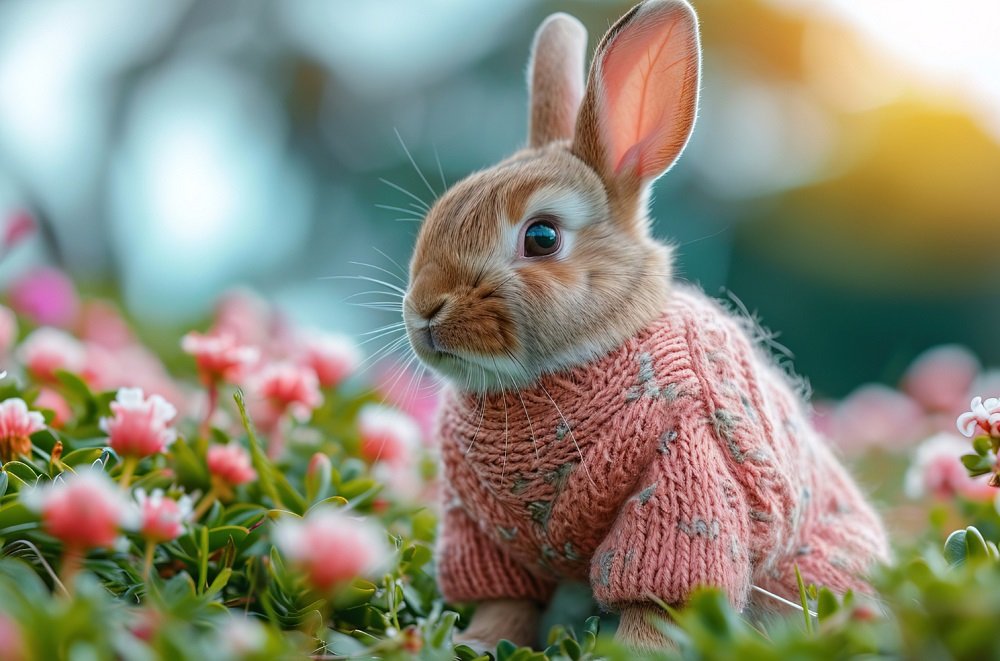Rabbits are one of the most adorable and fascinating creatures in the animal kingdom. As social animals, they thrive on interaction and care, especially when it comes to their young. Mother rabbits, in particular, play a crucial role in nurturing their babies, and their feeding habits are a vital aspect of their care. Understanding how mother rabbits feed their babies is essential for rabbit breeders, pet owners, and animal enthusiasts alike, as it provides valuable insights into their behavior, nutrition, and overall well-being.
Overview of Mother Rabbit’s Feeding Habits
Mother rabbits, also known as does, have a unique way of feeding their babies, which is crucial for their survival and growth. In this article, we will delve into the fascinating world of rabbit parenting and explore the intricacies of how mother rabbits feed their babies. From the composition of their milk to their feeding schedules and behaviors, we will cover it all. By the end of this article, you will have a comprehensive understanding of the remarkable ways in which mother rabbits care for their young.
What to Expect
In the following sections, we will discuss the nutritional value of a mother rabbit’s milk, how often they feed their babies, and the importance of their feeding schedule. We will also explore the role of the father rabbit in caring for the babies and the signs of healthy feeding habits. Whether you are a seasoned rabbit breeder or a curious animal lover, this article aims to provide you with a thorough understanding of the remarkable ways in which mother rabbits feed their babies.
How Do Mother Rabbits Feed Their Babies?
Mother rabbits, also known as does, take great care in feeding their babies, also known as kits. The feeding process is crucial for the kits’ survival and growth. In this article, we will delve into the details of how mother rabbits feed their babies, including the frequency, duration, and type of food they provide.
The Importance of Milk
Milk is the primary source of nutrition for newborn rabbit kits. Mother rabbits produce rich, nutrient-dense milk that provides everything their babies need to grow and thrive. Rabbit milk contains:
- High protein content (around 10-12%) to support muscle growth and development
- Rich in fat (around 10-12%) for energy and warmth
- Low in lactose, making it easily digestible for the kits
- Antibodies to protect the kits from infections and diseases
Rabbit milk is so rich that it allows the kits to grow rapidly, doubling their birth weight in just a few days. This rapid growth is essential for the kits’ survival, as it helps them develop quickly and become less dependent on their mother’s milk.
Feeding Frequency and Duration
Mother rabbits feed their kits in short, frequent intervals. The frequency and duration of feeding depend on the age of the kits: (See Also: Do Rabbits Thump When They Are Happy)
| Age of Kits | Feeding Frequency | Feeding Duration |
|---|---|---|
| 0-3 days | Every 2-3 hours | 5-10 minutes |
| 4-7 days | Every 3-4 hours | 10-15 minutes |
| 8-14 days | Every 4-5 hours | 15-20 minutes |
| 15-21 days | Every 5-6 hours | 20-30 minutes |
The mother rabbit’s feeding schedule is crucial, as it helps regulate the kits’ digestive system and prevents overfeeding or underfeeding.
Feeding Behavior
Mother rabbits exhibit unique feeding behavior to ensure their kits receive the necessary nutrients:
- Nursing posture: The mother rabbit assumes a nursing posture, where she lies on her side, exposing her nipples to the kits.
- Kits’ nursing order: The kits nurse in a specific order, with the strongest kits nursing first and the weakest last.
- Feeding stimulation: The mother rabbit stimulates the kits to nurse by gently nuzzling them and making soft vocalizations.
- Kit rotation: The mother rabbit rotates the kits during feeding to ensure each kit receives an equal amount of milk.
This complex feeding behavior ensures that each kit receives the necessary nutrients and helps maintain a strong bond between the mother and her babies.
Weaning and Solid Food Introduction
As the kits grow, they begin to transition from milk to solid food. This process, called weaning, typically starts around 18-20 days of age:
- Initial weaning: The mother rabbit starts to introduce small amounts of solid food, such as hay and pellets, into the kits’ diet.
- Gradual weaning: The mother rabbit gradually reduces the frequency and duration of nursing sessions, encouraging the kits to rely more on solid food.
- Full weaning: By around 28-30 days of age, the kits are fully weaned and no longer rely on their mother’s milk.
Weaning is a critical period, as it helps the kits develop their digestive system and prepares them for independence.
Conclusion
In conclusion, mother rabbits play a vital role in feeding their babies, providing them with rich, nutrient-dense milk and gradually introducing solid food to ensure a smooth transition. The feeding frequency, duration, and behavior are all crucial aspects of the kits’ growth and development. (See Also: Where Can I Hunt Rabbits Near Me)
By understanding how mother rabbits feed their babies, we can better appreciate the complexity and importance of this process, and provide optimal care for our own rabbit kits.
Recap
In this article, we discussed:
- The importance of milk in the kits’ diet
- The feeding frequency and duration based on the kits’ age
- The unique feeding behavior exhibited by mother rabbits
- The weaning process and introduction of solid food
By summarizing these key points, we can better understand the intricacies of rabbit nutrition and provide the best possible care for our furry friends.


